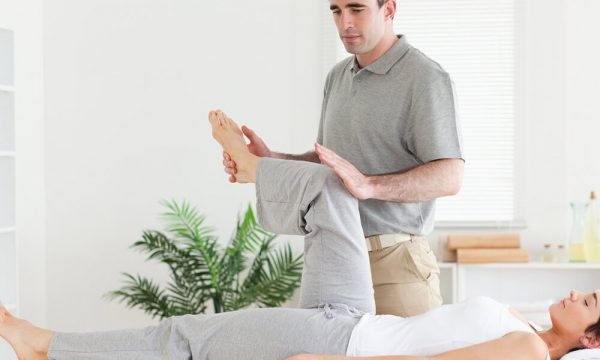Good posture is crucial for overall health and well-being. However, many people struggle to maintain it throughout the day. From working at a desk to lounging on the couch, your daily activities often lead to slouching and poor alignment. This can result in back pain, reduced mobility, and decreased confidence.
Fortunately, improving your posture is possible with some conscious effort and practical strategies. You can develop a healthier and more confident stance with these five specific exercises and habits.
Table of Contents
1. Practice Mindful Sitting
One of the simplest ways to improve posture is to practice mindful sitting. This involves maintaining awareness of how you position yourself when sitting. Keep your feet flat on the floor, your back straight, and your shoulders relaxed. Your hips should be at a right angle to your thighs, which helps distribute your weight evenly and prevents slouching. Use a chair with proper lumbar support to help maintain the natural curve of your spine.
Mindful sitting also extends to your workspace setup. Keep the computer screen at eye level to avoid leaning forward or looking down. Keep your keyboard and mouse within easy reach so your arms remain relaxed at your sides. Take regular breaks to stand and stretch to prevent stiffness and promote better posture.
2. Strengthen Core Muscles
A strong core is essential for good posture. It supports your spine and helps maintain proper alignment. Core muscles include abdominal muscles and the muscles in your lower back, hips, and pelvis. Exercises such as planks, bridges, and leg raises can help build core strength and stability. These exercises engage multiple muscle groups, promoting better balance and posture.
Incorporating core strengthening exercises into your routine can lead to noticeable improvements in how you carry yourself. Perform these exercises at least three times a week for optimal results. As your core muscles become stronger, you’ll find it easier to sit and stand with proper alignment. This reduces the risk of back pain and enhances your overall appearance and confidence.
3. Include Pilates in Your Routine
Pilates is a highly effective method for improving posture. It builds core strength, flexibility, and body awareness. The controlled movements and exercises in Pilates help to align the spine and strengthen the muscles that support good posture. Practicing Pilates regularly can increase your body’s awareness of proper alignment and help you maintain it throughout the day.
Pilates can also improve your mental focus and relaxation. By concentrating on your breathing and the precise execution of movements, you can reduce stress and enhance your overall sense of well-being. Many people find that Pilates leaves them feeling more balanced and centered. Whether you join a class for Pilates in Fort Lauderdale or in your area, incorporating Pilates into your routine can be a step toward achieving better posture.
4. Use Ergonomic Furniture
Using ergonomic furniture is another effective way to improve posture, especially if you spend long hours at a desk. Ergonomic chairs, desks, and accessories support your body’s natural curves and reduce strain. An ergonomic chair, for example, provides proper lumbar support, adjustable height, and a seat that encourages a healthy sitting position. Similarly, an adjustable desk allows you to alternate between sitting and standing, promoting better posture and reducing the risk of back pain.
Ergonomic furniture can make a significant difference in your daily comfort and posture. It helps create a workspace that supports rather than hinders good posture. Using ergonomic accessories like keyboard trays, monitor stands, and footrests can further enhance your ergonomic setup.
5. Perform Regular Stretching
Regular stretching maintains flexibility and promotes good posture. Tight muscles, particularly in the chest, shoulders, and hips, can pull your body out of alignment and lead to poor posture. Stretching these muscle groups helps to release tension and improve your range of motion.
Incorporate stretches such as chest openers, shoulder rolls, and hip flexor stretches into your daily routine to counteract the effects of prolonged sitting. Stretching also increases blood flow and reduces muscle stiffness. Stretch for 10-15 minutes daily, focusing on tight or sore areas. Incorporating stretching into your routine can help you become more aware of your posture and make it easier to maintain proper alignment.
Wrap Up
Improving your posture involves mindful sitting, strengthening your core, incorporating Pilates, using ergonomic furniture, and performing regular stretching. These strategies contribute to better alignment, reduced discomfort, and a healthier appearance.





